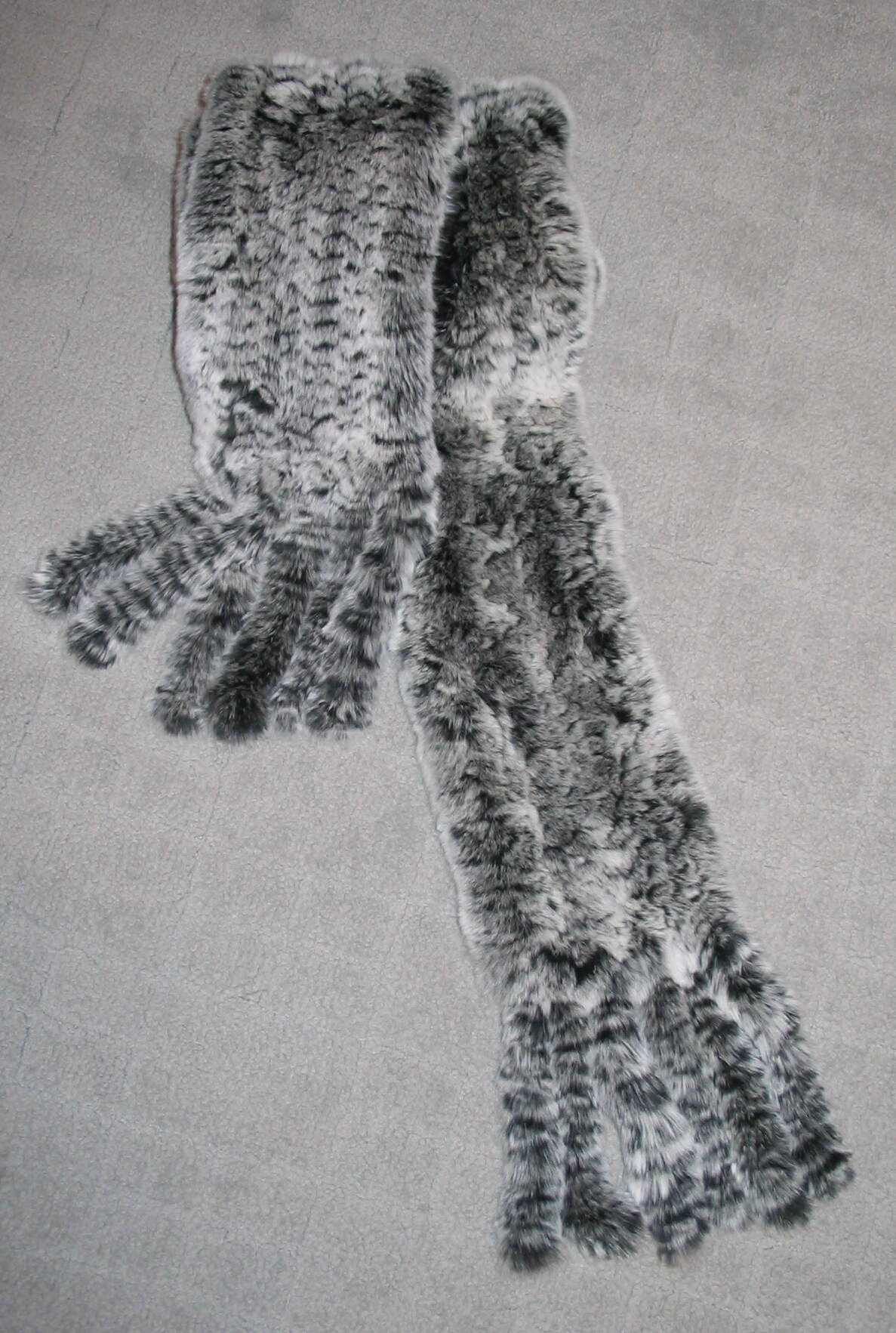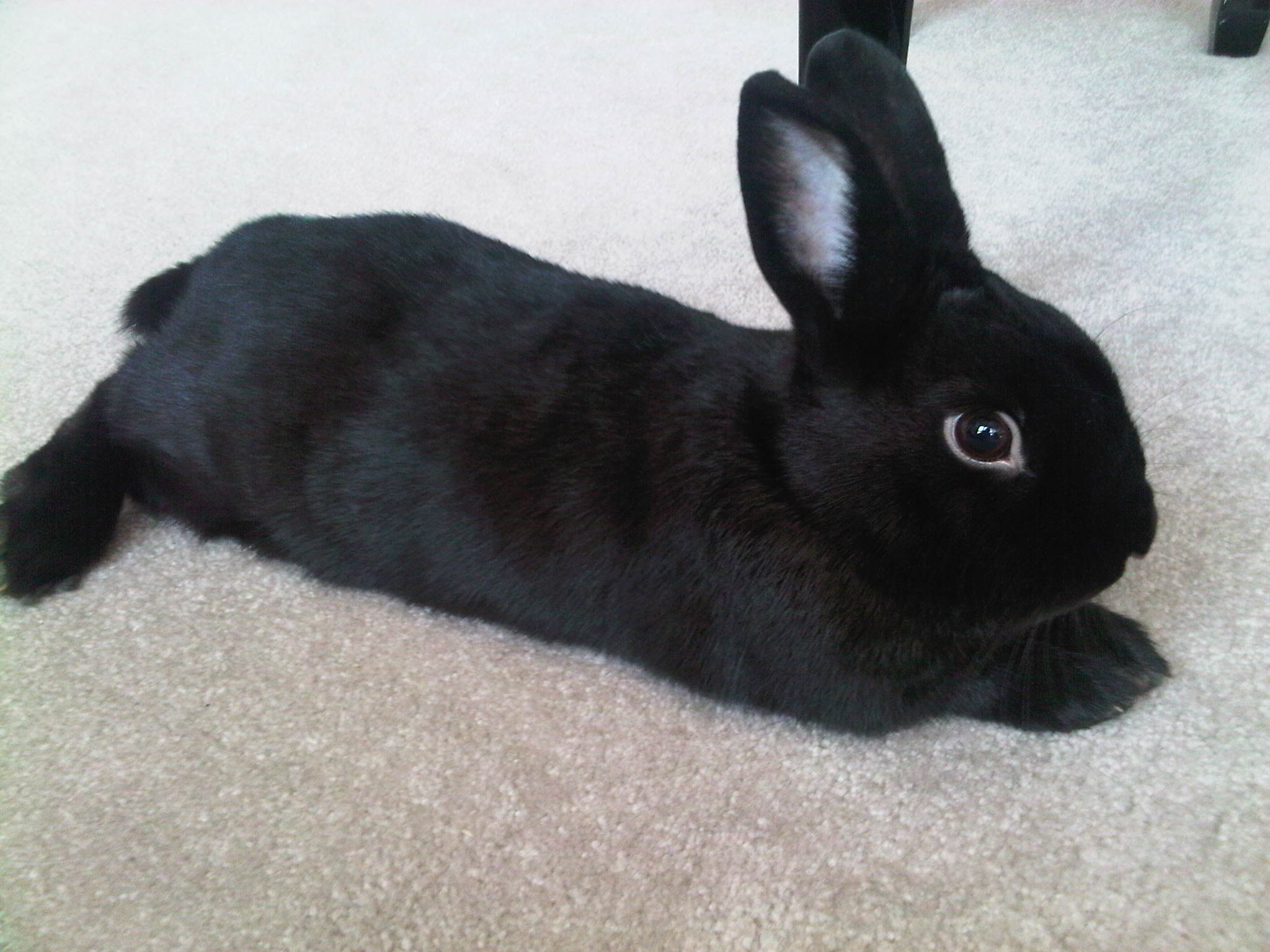Rabbit hair on:
[Wikipedia]
[Google]
[Amazon]



 Rabbit hair (also called rabbit fur, cony, coney, comb or lapin) is the
Rabbit hair (also called rabbit fur, cony, coney, comb or lapin) is the
 White pelts commanded a premium since they could be most easily dyed and in their natural state bore a close resemblance to much pricer ermine (
White pelts commanded a premium since they could be most easily dyed and in their natural state bore a close resemblance to much pricer ermine (



 Rabbit hair (also called rabbit fur, cony, coney, comb or lapin) is the
Rabbit hair (also called rabbit fur, cony, coney, comb or lapin) is the fur
Fur is a thick growth of hair that covers the skin of mammals. It consists of a combination of oily guard hair on top and thick underfur beneath. The guard hair keeps moisture from reaching the skin; the underfur acts as an insulating blanke ...
of the common rabbit
Rabbits, also known as bunnies or bunny rabbits, are small mammals in the family Leporidae (which also contains the hares) of the order Lagomorpha (which also contains the pikas). ''Oryctolagus cuniculus'' includes the European rabbit spec ...
. It is most commonly used in the making of fur hats and coats, and is considered quite valuable today, although it was once a lower-priced commodity in the fur trade.
Types of rabbit fur
The hair of a rabbit can be divided into three types: "longer, rectrix guard hairs, stiff at the base; the more numerous tectrix barbed hairs forming the major part of the coat, which share a hair follicle with the third type-the shorter hairs making up the undercoat." Colloquially, these types are called *''guide hairs'': external hairs, long and rough *''guard hairs'' (also called "barbes"): four guard hairs surround each guide hair, sealing the coat *''down'': there are approximately sixty down hairs for each guide hair; they are very short and barely visible, and serve to insulate the rabbit. Aselectively bred
Selective breeding (also called artificial selection) is the process by which humans use animal breeding and plant breeding to selectively develop particular phenotypic traits (characteristics) by choosing which typically animal or plant m ...
rabbit from the 1900s, the Rex rabbit
The term rex rabbit (without capitalization) refers informally to one of at least nine breeds of domestic rabbit (or a specimen thereof or similar thereto). One such breed is the ''Rex,'' which is recognized by the American Rabbit Breeders Associ ...
, has guard hairs of the same length as the down, but this is an atypical recessive trait that is relatively rare in wild rabbits.
Rabbit hair is commonly considered a byproduct of the ordinary process of breeding rabbits for meat, and as such is manufactured in vast quantities in England
England is a Countries of the United Kingdom, country that is part of the United Kingdom. It shares land borders with Wales to its west and Scotland to its north. The Irish Sea lies northwest and the Celtic Sea to the southwest. It is separa ...
and France
France (), officially the French Republic ( ), is a country primarily located in Western Europe. It also comprises of Overseas France, overseas regions and territories in the Americas and the Atlantic Ocean, Atlantic, Pacific Ocean, Pac ...
; more than seventy million pelts a year in France alone. However, the quality of fur from these rabbits tends to be low, as the rabbits are slaughtered before reaching twelve weeks old and still have the infant coat. The lower quality hair is sometimes used for felt.
In temperate climates, the highest quality furs are obtained in winter from rabbits over five months old, when the thickness of the fur is even; at other times of year, varying degrees of hair shedding causes uneven patches in the fur. The coat is also at its thickest at this time of year. The highest quality pelts are suitable for clothing
Clothing (also known as clothes, apparel, and attire) are items worn on the body. Typically, clothing is made of fabrics or textiles, but over time it has included garments made from animal skin and other thin sheets of materials and natura ...
, and typically constitute less than half of all pelts collected. The hair of the Angora rabbit
The Angora rabbit ( tr, Ankara tavşanı), which is one of the oldest types of domestic rabbit, is bred for the long fibers of its coat, known as '' Angora wool'', which are gathered by shearing, combing or plucking. Because rabbits do not posse ...
is plucked or shaved and used as fiber, rather than as pelts.
Rabbit fur products have a tendency to shed more easily than some other furs and might not have the same longevity.
Use in the fur trade
The use of rabbit pelts in the commercial fur trade took off in the 1920s, when it was incorporated into everything from hats to stoles, coats and baby blankets. By 1924, it accounted for half the US fur trade. While it was considerably cheaper than furs from other animals, it had softness and density and could also be dyed, plucked or shorn to look like other furs – shearing was also known as blocking. White pelts commanded a premium since they could be most easily dyed and in their natural state bore a close resemblance to much pricer ermine (
White pelts commanded a premium since they could be most easily dyed and in their natural state bore a close resemblance to much pricer ermine (stoat
The stoat (''Mustela erminea''), also known as the Eurasian ermine, Beringian ermine and ermine, is a mustelid native to Eurasia and the northern portions of North America. Because of its wide circumpolar distribution, it is listed as Least Con ...
). New Zealand white rabbit (actually bred in the US) was highly prized, but other rabbit varieties in different hues – including Havana
Havana (; Spanish: ''La Habana'' ) is the capital and largest city of Cuba. The heart of the La Habana Province, Havana is the country's main port and commercial center.
, Lilac
''Syringa'' is a genus of 12 currently recognized species of flowering woody plants in the olive family or Oleaceae called lilacs. These lilacs are native to woodland and scrub from southeastern Europe to eastern Asia, and widely and commonl ...
and Checkered Giant were also valuable because they could be used in their natural colouring. One commentator noted in the 1920s: " ere one sealskin coat graced Milady of Fifth Avenue in 1900, a hundred thousand coats of rabbit-seal are turned out on Sixth Avenue during the fur season for the Misses of Main Street all over America".
Names developed such as minkony, ermiline and northern seal – all of which were rabbit fur. After 1938, American fur coats had to be labelled using the name of the animal used in its making – for instance 'seal dyed coney' or 'beaver dyed rabbit' – in order to avoid confusion among consumers.
List of former names for rabbit hair coats
* Australian seal: Australian rabbit shorn and dyed to replicate natural seal fur. ''See also sealine.'' * Baltic black fox or Baltic brown fox or Baltic white fox: Rabbit dyed in a variety of hues to resemble fox fur. White fox was undyed fur from white rabbit orhare
Hares and jackrabbits are mammals belonging to the genus ''Lepus''. They are herbivores, and live solitarily or in pairs. They nest in slight depressions called forms, and their young are able to fend for themselves shortly after birth. The gen ...
. ''See also Baltic lion/red fox''.
* Baltic leopard: Australian rabbit dyed and marked to resemble the distinctive spots of a leopard skin coat.
* Baltic lion or Baltic red fox: Australian rabbit in its natural hue of either (respectively) yellow or reddish tones.
* Baltic tiger: Australian rabbit dyed to resemble the markings of tiger skin.
* Beaver dyed coney or French beaver or beaverette or Belgian beaver: Dyed and with the tips sheared in order to resemble the short dark-brown coat of natural beaver fur. Note that Hudson seal was muskrat
The muskrat (''Ondatra zibethicus'') is a medium-sized semiaquatic rodent native to North America and an introduced species in parts of Europe, Asia, and South America. The muskrat is found in wetlands over a wide range of climates and hab ...
* Bluerette: Rabbit dyed blue.
* Castorette: Rabbit dyed to replicate beaver.
* Chinchillette: Rabbit dyed to resemble a chinchilla
Chinchillas are either of two species ('' Chinchilla chinchilla'' and '' Chinchilla lanigera'') of crepuscular rodents of the parvorder Caviomorpha. They are slightly larger and more robust than ground squirrels, and are native to the Andes mo ...
(not the variety of rabbit), with characteristic graduated markings. Note that chapchillas and French chinchilla were made of dyed hare.
* Cony leopard or cony mole: Sheared and dyed rabbit. Cony often designated rabbits from Europe.
* Electric: Denoted a trade name for a variety of rabbit furs designed to replicate other animals, for instance electric beaver, mole or seal.
* Ermilette or ermilene or imitation ermine: White rabbit fur, sometimes painted with spots to look like ermine. Ermine was a traditional trimming, used on stoles and for robes of state, although rabbit versions of ermine became more widely used.
* French cony: White rabbit that had been shorn.
* French sable: Rabbit dyed to imitate more expensive sable
The sable (''Martes zibellina'') is a species of marten, a small omnivorous mammal primarily inhabiting the forest environments of Russia, from the Ural Mountains throughout Siberia, and northern Mongolia. Its habitat also borders eastern Ka ...
.
* Lapin: Shorn and dyed rabbit – this may be in a variety of colours.
*Mendoza beaver dyed coney or Mendoza beaver: A trade name of the Mendoza Fur Dyeing Works ''see beaver dyed coney''.
* Meskin: Denoted a trade name for a variety of rabbit furs designed to replicate other animals, for instance meskin seal or ermine. A variety replicating mole was known as Meskin moline.
* Minkony: Rabbit dyed and treated to resemble mink
Mink are dark-colored, semiaquatic, carnivorous mammals of the genera '' Neogale'' and '' Mustela'' and part of the family Mustelidae, which also includes weasels, otters, and ferrets. There are two extant species referred to as "mink": t ...
, a fur available in a wide variety of colours from white to near black.
* Molin or Moline or cony mole: Rabbit designed to resemble mole fur. ''See also Meskin moline''.
*Muskratine: Shorn and dyed rabbit resembling seal.
* Nutriette: Shorn and dyed to resemble a Nutria fur.
* Sealine or Arctic seal or Australian seal or Roman seal or northern seal or seal dyed coney or Baltic seal or bay seal or coast seal or near seal or sealette: Sheared and dyed to replicate the brown, grey or black fur of harp or northern seal.
* Squirrelette: Dyed to resemble a squirrel fur – typically the blue/grey Siberian squirrel.
See also
*Angora wool
Angora hair or Angora fibre refers to the downy coat produced by the Angora rabbit. While the names of the source animals are similar, Angora fibre is distinct from mohair, which comes from the Angora goat. Angora fibre is also distinct from ca ...
*List of types of fur
This list of types of fur describes the characteristics of types of fur used in fur clothing. Each type of fur serves its own purpose and has its own unique characteristics in garment manufacturing.
Chinchilla
Characterized by their dense, velv ...
References
{{DEFAULTSORT:Rabbit Hair Animal hair products History of fashion cs:Srst angorského králíka